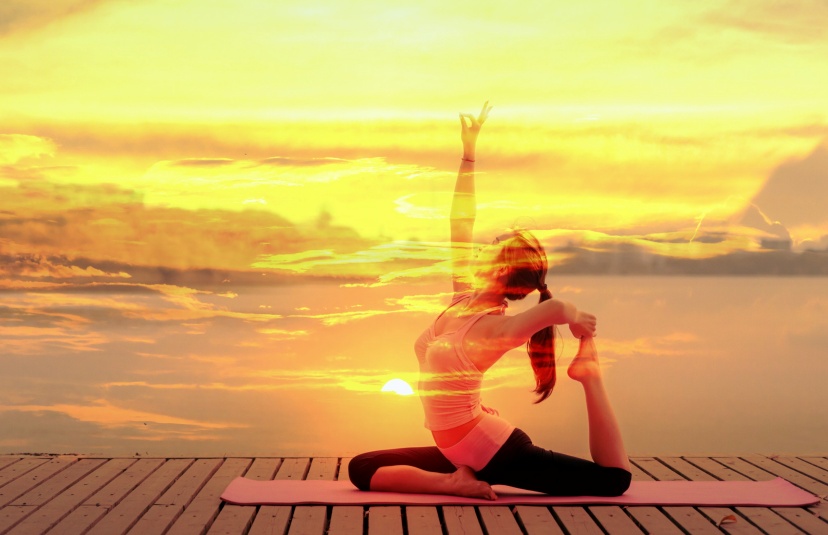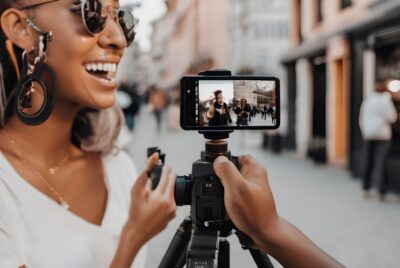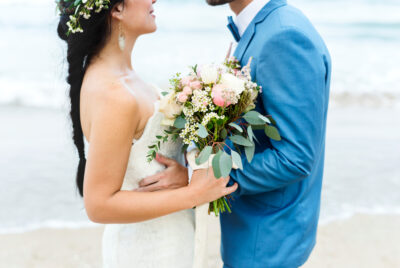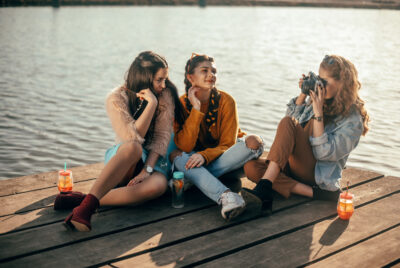Double Exposure Photography: Unleashing Creativity and Capturing Magic
Introduction
Photography has always been a powerful medium for creative expression. One technique that allows photographers to push the boundaries of their imagination is double exposure photography. In this article, I will guide you through the fascinating world of double exposure photography, offering valuable suggestions and insights to help you create captivating and mesmerizing images.
1. Understanding Double Exposure Photography
1.1 What is double exposure photography? Double exposure photography involves capturing two or more images onto a single frame, creating a blend of multiple exposures. It allows you to combine elements, merge different scenes, or overlay textures and patterns, resulting in unique and artistic compositions.
1.2 The magic of double exposure? Double exposure photography has a magical quality to it. It opens up a realm of possibilities, where two separate images can harmoniously coexist, telling a story or evoking emotions that a single photograph alone cannot achieve. It’s a technique that adds depth, symbolism, and intrigue to your visual storytelling.
2. Equipment and Camera Settings
2.1 Choosing the right camera Most modern digital cameras offer a double exposure feature, allowing you to create multiple exposures in-camera. However, if you’re using a film camera, look for one that has a multiple exposure function or manually rewind the film to expose it again.
2.2 Camera settings for double exposure To create successful double exposures, understanding the camera settings is essential. Set your camera to manual mode, adjust the aperture, shutter speed, and ISO based on the desired exposure, and ensure that auto-focus is turned off. This control will give you the freedom to achieve the desired effect and maintain consistency throughout your images.
3. Techniques for Creating Double Exposures
3.1 Technique 1: Multiple Exposures In-Camera Modern digital cameras often have a multiple exposure mode. Explore the settings and options provided by your camera to blend exposures directly in-camera. This technique allows you to see the results immediately, providing room for experimentation and creative adjustments.
3.2 Technique 2: Overlaying Images in Post-Processing If your camera doesn’t have a multiple exposure feature, or if you prefer more control over the blending process, you can achieve double exposures in post-processing. Use software like Adobe Photoshop or other dedicated editing tools to overlay and blend images, adjusting the opacity and layer blending modes to achieve the desired effect.
4. Creative Ideas and Inspiration
4.1 Using nature as a backdrop Nature offers a rich tapestry of textures, colors, and patterns that can be combined with portraits or other subjects. Experiment with merging landscapes, flora, and fauna with human elements to create ethereal and dreamlike images.
4.2 Blending architecture and people. Explore the juxtaposition of architectural elements with human subjects. Overlaying portraits with cityscapes or incorporating geometrical patterns can result in visually striking images that showcase the harmony between artificial structures and humanity.
4.3 Mixing genres and concepts. Double exposure photography allows you to transcend traditional boundaries and merge different genres or concepts. Blend portraits with still life, combine documentary with abstract, or experiment with the fusion of various artistic styles to create truly unique and thought-provoking visuals.
5. Post-Processing and Editing
5.1 Refining the exposure and contrast. During post-processing, fine-tune the exposure and contrast of each layer to achieve a harmonious blend. Adjust the brightness, shadows, highlights, and curves to ensure that the elements within the composition complement each other.
5.2 Color grading and toning. Experiment with color grading and toning techniques to establish a cohesive and captivating visual style. Enhance or mute colors, apply split-toning effects, or create a monochromatic aesthetic to evoke specific moods or enhance the narrative of your double exposure images.
6. Tips for Successful Double Exposure Photography
6.1 Plan and pre-visualize. Before capturing a double exposure image, take time to plan and pre-visualize the desired outcome. Consider the elements you want to combine, the story you want to tell, and the emotions you want to evoke. Having a clear vision will guide your creative process and enhance the chances of achieving your desired result.
6.2 Experiment and embrace unpredictability. Double exposure photography is a realm of experimentation and serendipity. Embrace the unexpected outcomes and surprises that arise during the process. Sometimes, the most captivating images emerge from happy accidents and spontaneous moments of inspiration.
6.3 Patience and practice. Mastering double exposure photography takes time and practice. Be patient with yourself and embrace the learning process. With each experiment, you’ll gain insights, refine your technique, and develop a personal style that reflects your artistic vision.
7. Overcoming Challenges
7.1 Achieving proper exposure. Double exposure photography requires careful exposure control. The overlapping of images can result in overexposure or underexposure. Use the histogram and exposure compensation to maintain balanced exposures and retain details in both the highlights and shadows.
7.2 Managing composition and subject placement. Pay attention to the composition and placement of subjects within the frame. Consider how the elements will interact and align when blended together. Strategic positioning and thoughtful composition will enhance the visual impact and clarity of your double exposure images.
8. Examples of Stunning Double Exposure Images
8.1 Example 1: Enchanting Nature Portraits. In this example, we blend delicate floral elements with the portraits of individuals, creating ethereal and enchanting visuals that emphasize the beauty and interconnectedness of humans and nature.
8.2 Example 2: Urban Dreamscape. In this example, we merge cityscapes and architectural details with human figures, resulting in mesmerizing and surreal compositions that highlight the dynamic relationship between urban environments and humanity.
9. Conclusion
Double exposure photography is a captivating technique that allows you to unlock your creativity, blend multiple images, and create visual stories that resonate with viewers. By understanding the technical aspects, experimenting with different ideas, and embracing the element of surprise, you can elevate your photography to new artistic heights.
Frequently Asked Questions (FAQs)
Q1. Can I create double exposure images with my smartphone?
Yes, some smartphone camera apps offer a double exposure feature, allowing you to create stunning images using your mobile device. Explore the settings and features of your camera app to unleash your creativity.
Q2. What types of subjects work well for double exposure photography?
Double exposure photography works well with a wide range of subjects. Portraits, nature, architecture, and still life are popular choices, but don’t be afraid to experiment with different genres and concepts to create unique and compelling compositions.
Q3. Is post-processing necessary for double exposure photography?
Post-processing can enhance and refine your double exposure images, but it’s not mandatory. The blending of multiple exposures can be achieved in-camera or through manual film manipulation. Post-processing provides additional creative control and allows for fine-tuning of the final result.
Q4. Can I use old film cameras for double exposure photography?
Absolutely! Many film cameras offer a multiple exposure function or the ability to manually rewind the film for multiple exposures. Experimenting with film can add a nostalgic and unique charm to your double exposure images.
Q5. How can I make my double exposure images stand out from the crowd?
To make your double exposure images stand out, focus on storytelling, composition, and the unique combination of elements. Experiment with different techniques, think outside the box, and let your imagination guide you. Embrace your own style and perspective to create images that reflect your artistic vision.
In conclusion, double exposure photography is a captivating technique that allows photographers to merge multiple images into unique compositions. By understanding the concepts, techniques, and creative possibilities, you can unleash your creativity and capture mesmerizing visuals that leave a lasting impression on viewers. So grab your camera, embrace experimentation, and embark on a journey to create stunning double exposure images that tell stories and evoke emotions.
Further reading
Check out our other relevant articles:
.




